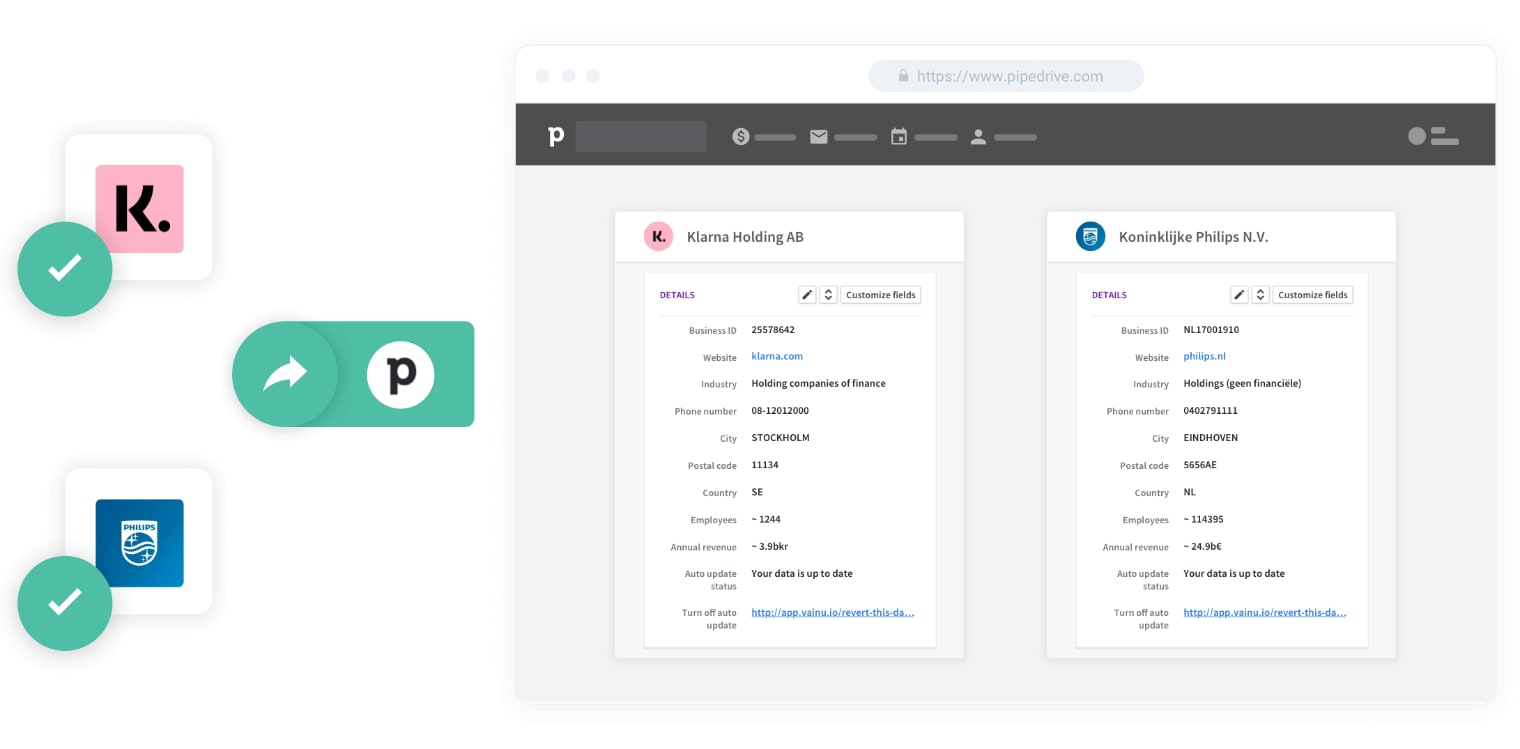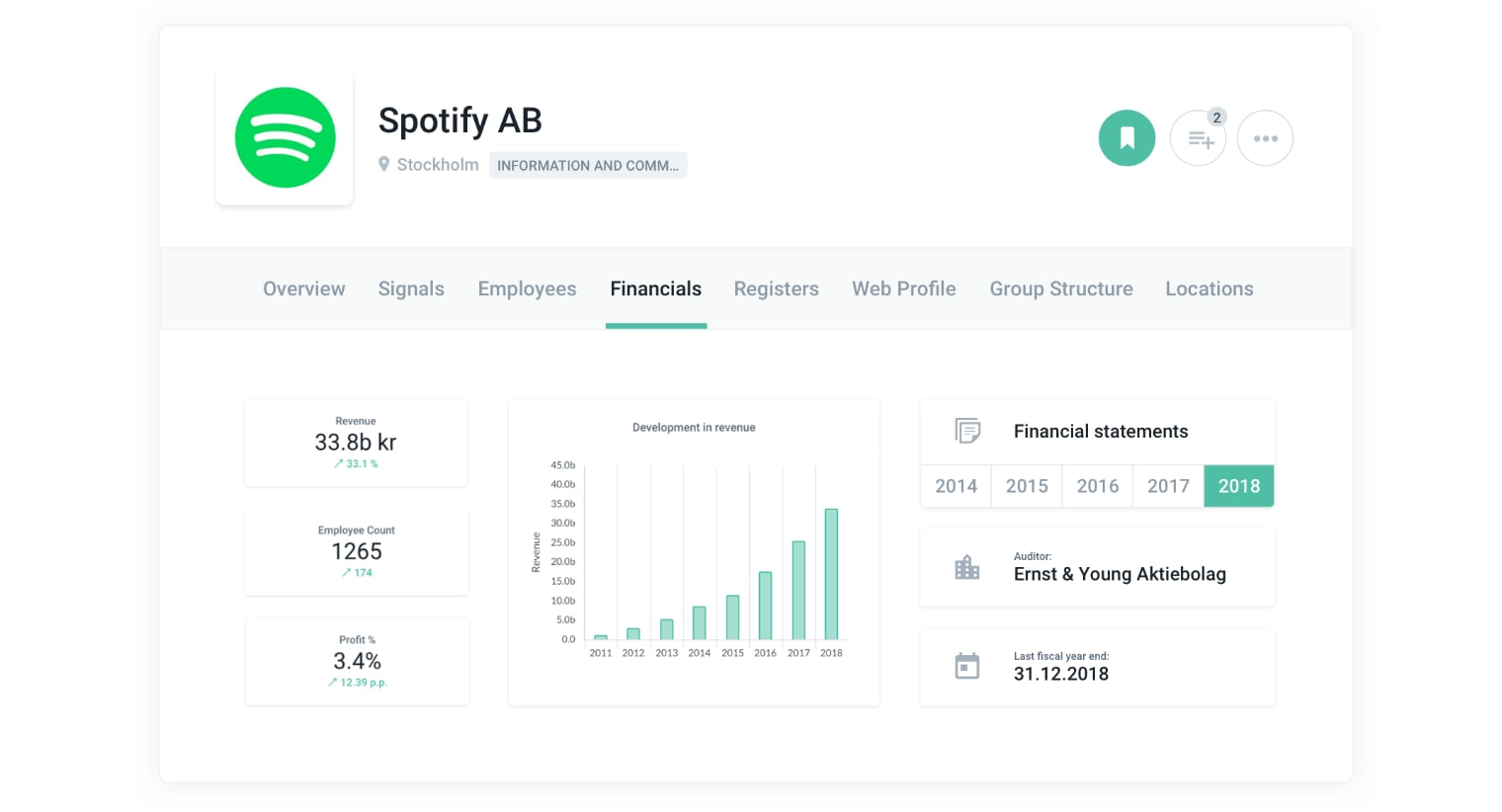No, Salespeople Shouldn’t Update Their CRM
It may be stating the obvious, but data is an indispensable component of a modern, successful sales team. Data-driven sales pros can avoid pursuing bad-fit prospects, and at the same time, identify new opportunities that would otherwise go unnoticed.
It’s also obvious to say there’s no shortage of information on pretty much any company in the world today. In theory, any. B2B sales organization is flooding with data. Their databases are filled with data on companies and customers. But.. is this really true? Is your CRM filled with relevant data? Do your salespeople have easy access to the data most relevant to them? And, are you sure that the data they’re acting on is accurate and up to date?
Despite its abundance, there are two problems with B2B business data. To boost sales performance, salespeople must draw reliable insights from the information stored in the CRM. For that, they must have easy access to the data most relevant to them, and ensure the data they’re acting on is accurate and up to date.
Let’s break it down.
Problem #1: Incomplete databases
From the moment a person subscribes to a company’s newsletter to the first conversation with a salesperson, any sales organization is continuously compiling customer data. With this information, usually stored in the CRM, salespeople can make every interaction with a prospect personal and contextual.
For this to happen, salespeople must have easy access to enough data, so they can have a deep understanding on the prospects’ situations and needs. This is not always the case. Missing and incomplete data fields often cripple the database. For example, marketers usually ask for the prospect’s company name and job title in lead capture forms. Such information holds little value without context. What’s the company’s industry? And its financial situation? Is it a good fit? Answering these questions requires more than the basic firmographic data usually stored in the CRM.
Worse, business data quickly becomes obsolete. That takes us to the second problem: data decay.
Problem #2: Data decay
Customer data experiences decay. This means that, over time and for various reasons, the information on your contacts becomes outdated, inaccurate, and irrelevant.
Data decay occurs slowly enough that no alarms go off. Contacts’ email addresses change as they move from one company to another, someone creates a duplicated entry, companies relocate, or a merger goes unnoticed. The steady flow of small errors makes data decay hard to detect and a very real problem.
Like leaves turning yellow in autumn, data decay is a fact of life. Estimates say a typical sales and marketing database decays at a rate of 23% per year.
The effectiveness of any sales tool depends on the quality fed into it. You may invest on the most advanced CRM platform, but without reliable data, you won’t be sure you’re after the right accounts.
Good salespeople want to allocate their time and energy to value-added selling activities, not sitting behind a screen manually entering data into a system. It’s not surprising salespeople and CRM systems don’t get along.
How to ensure your data is fresh and reliable
Many sales organizations trust their salespeople to keep their contact database up-to-date and add any missing information as they research their accounts. After all, who are the primary users of a CRM? That’s right, salespeople. Day in, day out, salespeople log into the CRM and keep track of their daily sales activities.
If that’s the case, it only seems natural that salespeople are in charge of keeping the database in shape, updating records as they go along. What can go wrong?
As a result, the CRM is just another administrative task on a salesperson’s already crowded plate. Salespeople spend a good chunk of their time on non-selling activities, including entering data into a CRM system, fixing formatting issues, or removing redundant fields.
Good salespeople want to allocate their time and energy to value-added selling activities, not sitting behind a screen manually entering data into a system. It’s not surprising salespeople and CRM systems don’t get along.
If salespeople shouldn’t update the CRM, then what?
If salespeople shouldn’t spend their time and energy making their CRM’s data as good as it could, who’s going to do it? Robots, of course.
We live in a time where there’s a megaton of automation at our fingertips. Sales intelligence eliminates previously manual processes, like updating your CRM records. The technology locates the relevant company data and insights you need while verifying them for accuracy and giving you a complete overview of every prospect. In other words, it allows you to sit back and watch your database grow with relevant, actionable insights.
Next, let’s go through, step-by-step, how you can tap into sales intelligence to establish a systematic CRM data update process.
Data updates: step-by-step
1) Define your goal
When planning an update of your contact database, you want to define the business goal you want to achieve. Are you looking just to clean your database? Improve your segmentation? Or appending missing information in real-time?
Right at the start, you should also define how often you want to update your data. Ideally, you want to implement real-time updates to monitor changes in your target accounts. This way, you’ll be able to react and reach out as soon as a new company matches the description of your ideal customer profile.
Take this example. An accounting company in the finance industry wants to track whenever any of its 20,000 clients releases new financial information. Such insight helps the sales and marketing teams align sales cycles and launch marketing campaigns when their customer expect it the most.

2) Select the data fields to update
Next, you need to choose the data categories in need of updating. We recommend listing all the attributes that describe your ideal customer profile.
- Basic firmographic data, including business IDs, registry entities, and location data
- Financial data, such as balance sheets and financial statements
- Group structure, funding, and mergers data
- Official industry classification and other categorization
- Decision-makers and contact data
- Website intelligence, including keywords and news page
- Technology data, such as content management system and marketing automation tools in use
- Social media data
Back to our example, an accounting company will tap into the financial data category and create the necessary data fields in their CRM to receive information, such as the release of a financial statements.
When connected to a sales intelligence platform, the data fields in the CRM will be automatically updated any time a data point changes, ensuring salespeople always act on the latest information.
3) Choose the destination
Sales intelligence software integrates with different business systems. Typically, your CRM will be the central hub for all of your contact data. As a result, a sales intelligence platform will append additional data to your CRM record, so your database becomes an abundant reservoir of company information.
This process is called data enrichment and is done by associating the right data with the right account in your CRM. All the robots need is a common factor that links the different datasets together. For example, this can be a business ID, the name of the company, or a website domain.
There might be a time when you want to update the data in another system. This can be the case with marketing automation tools. This can help you launch campaigns at the right time.

4) Select the records to update
Finally, select the group of companies you want to update. You could decide to update all the accounts in your CRM, or a specific segment, such as all company in a specific region, or with a specific employee count.
In our example case, the company wants to receive data updates to identify up-sell opportunities. Therefore, the data update will focus on the existing customers segment.
5) Act on trigger events
Real-time data updates open the door to selling based on trigger events. In sales, timing is everything, and nothing indicates better when it’s the right time to sell than trigger events.
Data updates from external sources like sales intelligence technology help incorporate trigger events into your sales process. With real-time company information feeding into your CRM, salespeople will be alerted of recent changes that indicate the best time to sell your product or service. Trigger events can also help you customize your outreach as they offer context to personalize your outreach.
Not a one-time thing
Maintaining a reliable database full of updated records requires commitment. Data cleaning and data updates can’t be one-time projects—remember, data decay is a fact. A data dump doesn’t mean a data-driven sales process.
The smarter solution is to automate the process and trust sales intelligence technology to a) clean your data and b) update data points automatically by feeding relevant company information into your CRM. Only then salespeople will be able to have access to the data most relevant to them, draw reliable insights, and subsequently boost sales performance.
From webhooks to native integrations, there are many ways to update your database and avoid manual data projects. Curious about how Vainu’s sales intelligence data and enrichment capabilities can turn your CRM into an insight engine? Request a demo to learn more.
